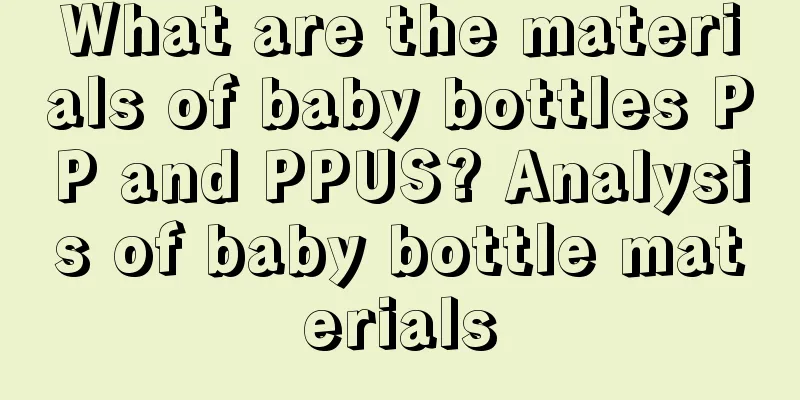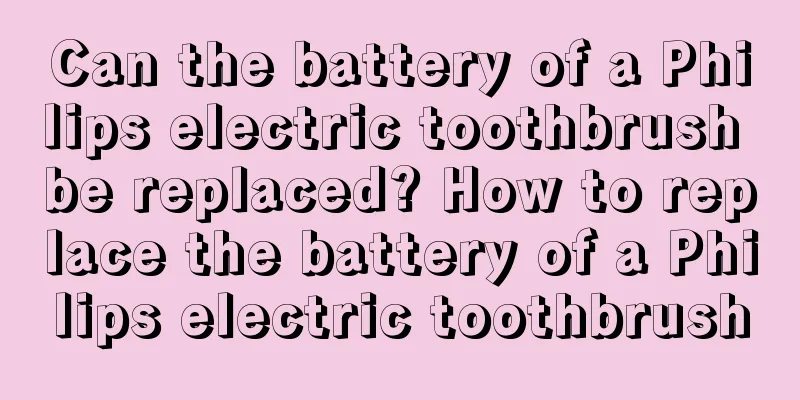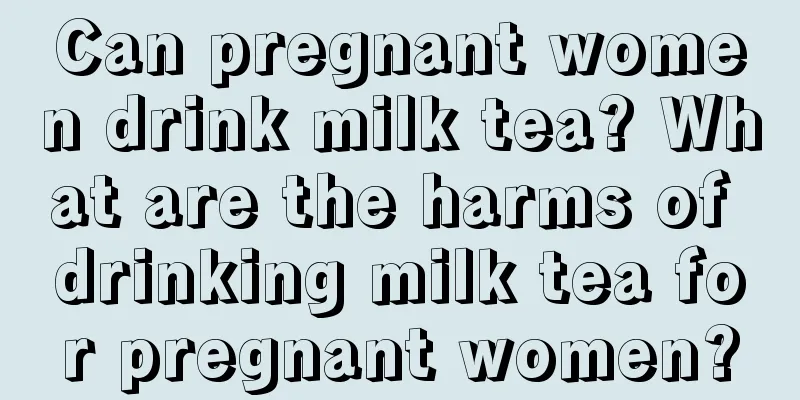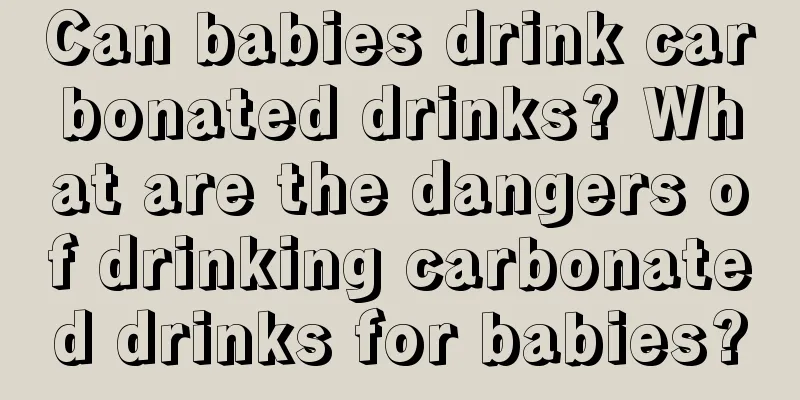What are the materials of baby bottles PP and PPUS? Analysis of baby bottle materials

|
Speaking of baby bottles, everyone should be familiar with them. Baby bottles are a very common baby product. You can often see many children drinking from bottles. Baby bottles are made of many kinds of materials, and different materials have different prices and effects. What are the materials of baby bottles PP and PPUS?1. PP baby bottle Features: PP baby bottles have high chemical stability, good hygienic properties, high heat resistance, and microwave tableware are generally made of PP plastic products. They are non-toxic, harmless to the human body, and the cheapest. However, they have the shortest lifespan, the shortest long-term high temperature resistance, and are easily oxidized and have poor corrosion resistance. They are not as beautiful as PC baby bottles. Now many manufacturers have begun to use PP instead of PC, because some PC plastic baby bottles may produce a toxic substance, bisphenol A, after high-temperature sterilization, which is not good for babies, while PP material is relatively stable. Personal opinion: PP is still made of plastic, and the quality of the materials varies with the price. I am still worried about using it for babies. If it is for newborns, I would definitely not recommend it. When the baby is older, over 6 months old, it is still good to use PP bottles for drinking water. It is strong and resistant to falling, and the cost performance is relatively high. 2. PPSU baby bottle Features: PPSU is a safe material that does not contain carcinogenic chemicals that disrupt endocrine function (environmental hormones: bisphenol A). It is widely used in medical equipment. PPSU is a material with excellent heat resistance, with a heat resistance temperature of up to 207 degrees. It can withstand repeated high-temperature boiling, steam sterilization, vacuum high-pressure sterilization in hospitals, microwave heating sterilization, and liquid sterilization. PPSU material has excellent drug resistance and acid and alkali resistance, and can withstand cleaning with general medicines and detergents without chemical changes. Personal opinion: PPSU baby bottles have been tested and confirmed to contain no bisphenol A toxins. They have the three superior characteristics of non-toxic and transparent glass baby bottles and light and shatter-resistant PC baby bottles. They are the most ideal and safest baby bottle material. They are a very good choice for both newborns and older babies. Recommended brand: AFPPSU Papasu. Recommended reason: It uses PPSU medical-grade raw materials imported from Germany, has a temperature resistance of 180 degrees, can be repeatedly sterilized 2,000 times, and has a unique safety identification code, which is guaranteed. PPSU > PP. This is the introduction to the differences between PP baby bottles and PPSU baby bottles. I hope it will be helpful to everyone. Tips: The pacifier should be replaced every three months at most to prevent excessive bacteria from entering the baby's body. It can be sterilized by boiling in water or in a sterilizer. Analysis of baby bottle materials1. Characteristics of glass baby bottles The characteristics of glass baby bottles are that they are safe, do not contain bisphenol A, and have high corrosion resistance and heat insulation properties. Glass baby bottles have good transparency and wear resistance, and the scale and bottle body will not become blurred even if they are permanently worn. However, there are two disadvantages of glass baby bottles, which are heavy and fragile. Glass baby bottles have a certain thickness and weight, so babies cannot hold them steadily, and they are easier to break when dropped on the ground than plastic baby bottles. At the same time, it is also necessary to pay attention to the fact that thermal expansion and contraction can cause glass to burst. 2. Characteristics of plastic baby bottles There are many kinds of plastic materials, but the four materials used to make baby bottles are generally PC (polycarbonate), PP (polypropylene), PES (polyethersulfone), and PPSU (polyphenylsulfone). PC used to be the most popular material for plastic baby bottles because of its low price, good heat resistance, and light weight. However, since the news that PC baby bottles contain bisphenol A, which is not good for baby health, PC can no longer be used as a material for baby bottles. Instead, safer new materials such as PP, PES, and PPSU have replaced it. PES and PPSU are absolutely non-toxic and will not release toxic substances during use. However, in terms of the ability to repeatedly sterilize these two materials, PES can only be used for about 100 times and PPSU for 2,000 times, so PPSU is generally recommended. In addition, the baby bottles of these two materials have a honey color, which is their true color, so there is no need to worry about the addition of color powder. However, the price of this material is relatively expensive. The service life of PP baby bottles is only a dozen times. Problems will arise after more than a week of use. This is because the maximum operating temperature of PP is 107 degrees Celsius. Long-term steaming and sterilization will reduce its usability. However, its price is relatively cheap, so many people still choose it. 3. Performance comparison of glass and plastic baby bottles Heat resistance (anti-deformation degree): glass>PPSU=PES=PC>PP Washability: Glass ≈ PPSU = PES> PC> PP Strength: Plastic > Glass Transparency: glass=PC>PPSU=PES>PP 4. Characteristics of silicone rubber baby bottles Silicone baby bottles are made of liquid silicone (LSR), do not contain bisphenol A, will not break, and are soft in texture, making them very popular among parents. Silicone baby bottles have good stability and can maintain good elasticity between -60 and 200 degrees Celsius. They can be placed at room temperature of 25 degrees Celsius, sealed, not damp, and not exposed to high temperatures for at least 1 year without deterioration. In addition, silicone baby bottles have good chemical resistance, acid, alkali and a variety of chemicals, and are not easily deformed even by any disinfection method. They do not contain any harmful substances such as environmental hormones. Moreover, silicone rubber baby bottles are safe and non-toxic. Even if silicone is placed at room temperature, breast milk is not easy to deteriorate. If it is refrigerated or frozen, it can better maintain the freshness of breast milk. You do not need to change the baby bottle when using it, you only need to change the nipple and it can be used for a long time, but silicone baby bottles are difficult to clean. 5. Characteristics of ceramic baby bottles Among the many materials for baby bottles, ceramic baby bottles are the healthiest, safe and non-toxic, and have a certain heat preservation effect compared to glass baby bottles. Except for poor light transmittance and easy breakage, ceramic baby bottles are superior to other baby bottle materials in other qualities. Ceramic baby bottles are a new product that has been launched and are not very popular yet. They are also not cheap. Compared with baby bottles made of other materials, fewer parents choose ceramic baby bottles. 6. Characteristics of stainless steel baby bottles The advantage of stainless steel baby bottles is durability. As a durable material, stainless steel will not be broken or shattered due to thermal expansion and contraction, and can generally be used for 8-10 years. It is also easy to control temperature and does not contain harmful ingredients such as BPA. In addition, stainless steel baby bottles are easy to clean, and milk stains on the baby bottles can be easily rinsed off. As a common synthetic metal, stainless steel is also cheap. At the same time, it is also one of the recyclable metals, which is very environmentally friendly. However, as a relatively new member of the material of baby bottles, stainless steel baby bottles, like ceramic baby bottles, are not currently the mainstream material of baby bottles. Editor's summary: Glass and ceramic bottles are more suitable for newborns. Ceramic bottles are more expensive, and the difference between them and glass bottles is not that big, so it is enough to choose glass bottles. Plastic bottles are suitable for babies over three months old. If conditions permit, it is recommended to choose PPSU bottles. Stainless steel bottles are suitable for babies over one year old. They are cheap, but because stainless steel bottles are not transparent, you can't see how much milk is left in them, which is more troublesome. Silicone bottles are suitable for babies of all ages, with a high cost-effectiveness, and are suitable for mothers who are not afraid of the trouble of cleaning. Which is better for baby health: glass bottle or plastic bottle1. Difficulty of cleaning: The inner wall of a glass bottle is smooth and easy to clean, but the inner wall of a plastic bottle is not easy to clean, so plastic bottles get dirty easily during use. 2. Drop resistance: We all know that glass baby bottles are too easy to break, while plastic baby bottles are more drop-resistant. This is because the strength of glass is not as great as that of plastic, and glass baby bottles should not be carried. 3. Heat resistance: Glass has much higher heat resistance than plastic, so glass baby bottles are less likely to deform than plastic baby bottles. And some plastic baby bottles are prone to emit unpleasant odors when heated. 4. Wear of scale: In this regard, plastic bottles have absolutely no advantage. Generally speaking, the capacity scale of glass bottles will remain clear after a long time of use, but the capacity scale of plastic bottles can easily become blurred and unclear due to temperature changes and cleaning. In summary: After comparing the above four aspects, glass bottles are much better than plastic bottles in all other aspects except that they are easier to break. However, we also need to consider that babies often hold the bottle when drinking milk. Plastic bottles are much lighter than glass bottles and are also resistant to falling. Therefore, it is recommended that parents prepare a glass bottle and a plastic bottle. Glass bottles are best used only at home, while plastic bottles can be used when going out. Clean the bottle before sterilizing itBefore sterilizing the bottle, wash it thoroughly. If it is a new bottle, separate the bottle body, locking ring and nipple, put them in clean water and wash them with neutral soap. You can use a sponge and a brush to clean the inside of the bottle, but when cleaning the nipple, be careful to use only your fingers and warm soapy water during this process, because a brush with bristles may remove the silicone on the nipple. If it is a bottle after feeding, the mother must pour out the remaining milk after feeding and clean it in time to prevent milk stains from condensing on the bottle. There are special bottle brushes on the market that can be inserted into the bottle to clean every corner, paying special attention to the bottleneck and spiral. When cleaning the nipple, there is no need to use additional detergent. When cleaning, the nipple should be turned over and cleaned with a nipple brush. If there are milk stains condensed on the nipple, you can soak it in hot water for a while, wait until the milk stains become soft, and then use a nipple brush to brush it off. Keep the milk outlet on the nipple unobstructed. |
>>: What should the dressing table not face?
Recommend
What to do if a child has a cold and a runny nose? What medicine is good to take?
It is inevitable that babies will have a stuffy n...
Can baby rice cereal cause allergies? Can baby rice cereal cause constipation?
Many mothers know that babies need to eat complem...
Will breasts become deformed during breastfeeding? How to avoid breast deformation after childbirth?
In order to maintain their figure, many young mot...
Free vaccination schedule for infants and young children Is it better to pay for the vaccination of infants and young children or get it for free?
In order to strengthen the baby's physique an...
Can a 6-month-old baby eat egg yolks? Pay attention to these when eating egg yolks
Egg yolks are very nutritious. Many parents want ...
Is the Oral-B electric toothbrush good to use? How to identify the model of the Oral-B electric toothbrush
Oral-B is a well-known brand in toiletries. I rec...
What causes abdominal pain during pregnancy? Abdominal pain caused by non-pregnancy reasons
There are many physical problems during pregnancy...
How to relieve severe morning sickness? Tips to improve morning sickness
Morning sickness is a symptom that all pregnant w...
Does gestational diabetes affect the IQ of the fetus? What should be paid attention to during gestational diabetes?
The chance of developing diabetes during pregnanc...
Precautions for second pregnancy of elderly pregnant women Pre-pregnancy examination items for second pregnancy of elderly pregnant women
With the opening of the second-child policy, many...
How to name a newborn baby? What are the methods for naming a child?
Everyone must have heard of a lot of weird names ...
What are the materials of baby bottles PP and PPUS? Analysis of baby bottle materials
Speaking of baby bottles, everyone should be fami...
What is the difference between children's milk and adult milk? Which is better, children's milk or pure milk?
When choosing milk, I found that there is also ch...
Where are Philips electric toothbrushes produced? What batteries do Philips electric toothbrushes use?
Philips is a very popular brand. Where are Philip...
How to educate a disobedient child? Should a disobedient child be spanked?
Educating children is a very complicated and long...









